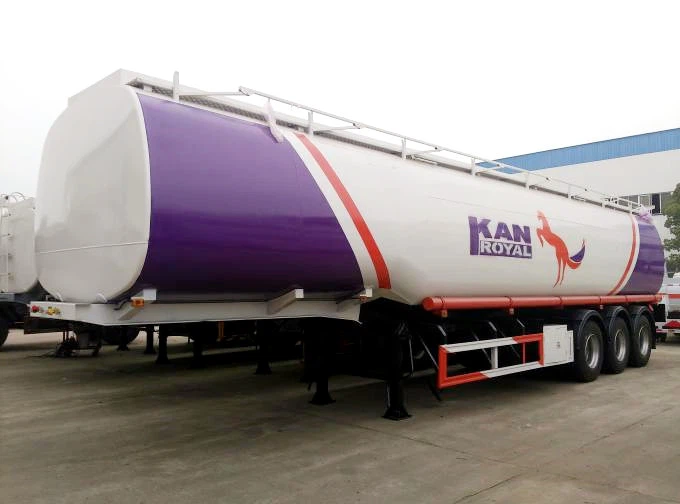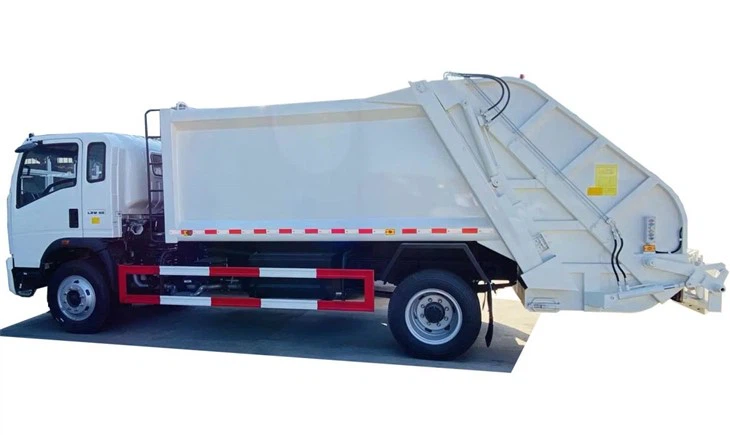Understanding Sweeping Trucks: Enhancing Cleanliness in Urban Environments

Sweeping trucks play a vital role in maintaining cleanliness in urban areas, ensuring that roads, parking lots, and public spaces remain tidy and safe. This article aims to provide a comprehensive overview of sweeping trucks, their types, functionalities, advantages, and best practices for their use. Whether you’re a city planner, maintenance manager, or simply curious about these machines, you will find valuable information here.
What is a Sweeping Truck?
A sweeping truck, often referred to as a street sweeper, is a specialized vehicle designed for cleaning streets and other paved surfaces. Equipped with various brushes and suction systems, these trucks efficiently remove debris, dirt, and litter, contributing to healthier and more aesthetically pleasing environments.
History of Sweeping Trucks
The concept of street sweeping can be traced back to the late 19th century. The first mechanical street sweeper was invented by Edward H. McGuire in 1844 in the United States. Initially a simple horse-drawn cart, the design evolved over time, leading to the sophisticated sweeping trucks we see today.
How Sweeping Trucks Work
Sweeping trucks operate using a combination of mechanical brushes and suction systems. Here’s a breakdown of their main components:
- Brushes: Rotating brushes loosen dirt and debris from the surface.
- Suction System: A powerful vacuum system collects the loosened material into a debris hopper.
- Water Spray: Some models use water to minimize dust and improve cleaning efficiency.
| Component | Function |
|---|---|
| Brushes | Loosen dirt and debris for collection |
| Suction System | Collects debris into the hopper |
| Water Spray | Minimizes dust during cleaning |
Types of Sweeping Trucks
Sweeping trucks come in various types, each designed for specific cleaning needs. Understanding the different types can help you select the right one for your task.
1. Mechanical Sweepers
Mechanical sweepers utilize brushes to dislodge debris, which is then collected by a vacuum. They are typically used for urban street cleaning.
2. Vacuum Sweepers
Vacuum sweepers are more powerful and are commonly used for heavy-duty cleaning tasks. They can pick up fine particles and are efficient for industrial settings.
3. Regenerative Air Sweepers
These machines use a unique air system that allows for high-efficiency cleaning with minimal water usage, making them suitable for eco-friendly operations.
4. Ride-On Sweepers
Ride-on sweepers enable operators to sit during operation, providing comfort and a wide view area. They are commonly used in large parking lots and outdoor spaces.
5. Truck-Mounted Sweepers
These sweepers are mounted on trucks and are ideal for city street cleaning. Their design allows for high maneuverability in urban environments.
6. Parking Lot Sweepers
Specially configured for parking lots, these sweepers focus on effectiveness and efficiency in large paved areas.
Benefits of Using Sweeping Trucks
Sweeping trucks offer numerous benefits for municipalities, businesses, and the environment. Here are some of the key advantages:
1. Improved Aesthetics
Regular street cleaning leads to a more visually appealing environment, which can enhance local businesses and community pride.
2. Enhanced Safety
Debris and litter can create hazardous conditions on the roads. Sweeping trucks reduce the risk of accidents by keeping streets clear.
3. Environmental Benefits
By removing pollutants from the streets, sweeping trucks prevent them from entering stormwater runoff, protecting local waterways and wildlife.
4. Cost-Effectiveness
Investing in sweeping trucks can save municipalities costs associated with road repairs and maintenance caused by debris buildup.
Best Practices for Operating Sweeping Trucks

To maximize effectiveness and efficiency, operators should follow best practices during the operation of sweeping trucks. Here are some key tips:
1. Schedule Regular Maintenance
Routine maintenance is essential for ensuring the longevity and performance of sweeping trucks. Check the brushes, filters, and suction systems regularly.
2. Use the Right Equipment for the Task
Selecting the appropriate sweeper based on the environment and debris type is crucial for effective cleaning.
3. Optimize Cleaning Routes
Plan routes for sweeping trucks to ensure maximum coverage with minimal fuel consumption. Mapping software can assist in this process.

4. Train Operators Effectively
Proper training for operators ensures they understand the machine’s capabilities and can operate it efficiently, leading to better cleaning outcomes.
Common Issues with Sweeping Trucks and Solutions
Despite their efficiency, sweeping trucks can encounter issues over time. Here are some common problems and their solutions:
1. Brush Wear
As brushes wear down, cleaning efficiency decreases. Regularly inspect brushes and replace them as needed to maintain performance.

2. Clogged Filters
Clogged filters can impair suction power. Clean or replace filters regularly to ensure optimal operation.
3. Hydraulic Issues
Hydraulic systems can develop leaks or pressure loss. Regular inspections and maintenance can help prevent costly repairs.
The Future of Sweeping Trucks
The future of sweeping trucks is evolving with advancements in technology. Here are some trends to watch:
1. Electric and Hybrid Models
As cities seek to reduce emissions, electric and hybrid sweeping trucks are gaining popularity, offering cleaner alternatives to traditional diesel models.
2. Smart Technology Integration
Smart technologies, such as GPS tracking and real-time data analytics, are increasingly integrated into sweeping trucks to improve efficiency and monitoring.
3. Eco-Friendly Materials
Manufacturers are developing sweeping trucks using sustainable materials, further enhancing their eco-friendliness.
FAQ About Sweeping Trucks
1. How often should streets be cleaned with a sweeping truck?
The frequency of street cleaning depends on local conditions, such as traffic volume and weather. Many municipalities clean streets weekly to monthly.
2. Can sweeping trucks work in bad weather?
While sweeping trucks can operate in light rain, heavy storms or snow can hinder their effectiveness. It’s best to follow weather conditions for optimal cleaning.
3. How are sweeping trucks maintained?
Regular maintenance includes inspecting brushes, cleaning filters, checking hydraulic systems, and performing routine engine checks.
4. What types of debris can sweeping trucks collect?
Sweeping trucks can collect a variety of debris, including leaves, litter, dust, gravel, and other small particles.
5. Are there any regulations for operating sweeping trucks?
Yes, regulations vary by locality, often related to operating hours, noise levels, and environmental considerations.
6. What is the typical lifespan of a sweeping truck?
The lifespan of a sweeping truck typically ranges from 5 to 10 years, depending on usage and maintenance practices.
